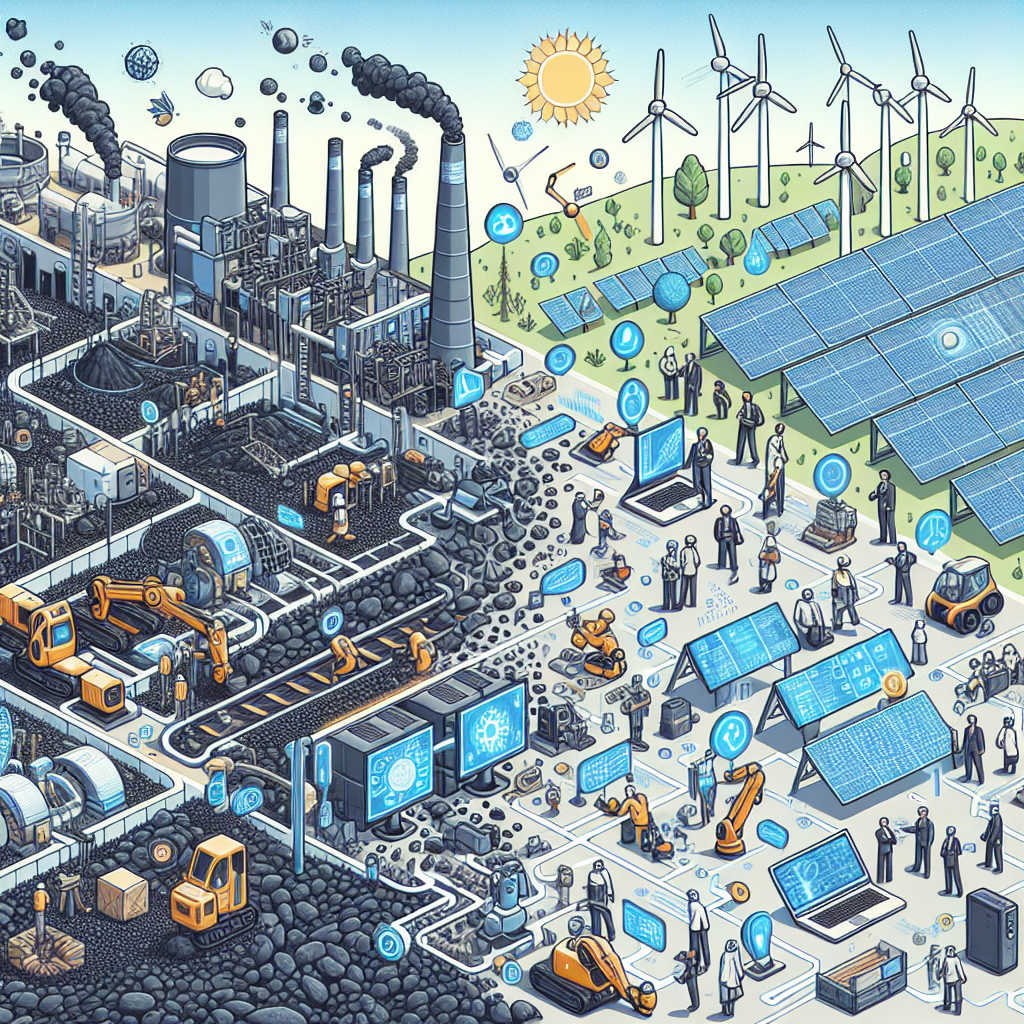Artificial Intelligence (AI) is revolutionizing the way we generate and use energy, particularly in the transition to renewable sources. As the world increasingly turns towards sustainable energy solutions to combat climate change and reduce dependence on fossil fuels, AI is playing a crucial role in accelerating this transition. From optimizing renewable energy production to improving energy efficiency, AI technologies are reshaping the energy landscape in ways that were previously unimaginable.
One of the key ways in which AI is driving the transition to renewable energy is through the optimization of energy production and distribution. Renewable energy sources such as solar and wind power are inherently variable, dependent on factors such as weather conditions and time of day. AI algorithms can analyze vast amounts of data from sensors and weather forecasts to predict energy generation patterns and optimize the operation of renewable energy systems. This allows for better integration of renewable energy into the grid, ensuring a reliable and stable energy supply.
AI is also being used to improve the efficiency of renewable energy systems. For example, AI-powered software can monitor and control solar panels to maximize energy production by adjusting the angle and orientation of the panels in real-time. This not only increases the amount of energy generated but also prolongs the lifespan of the equipment, leading to cost savings and a more sustainable energy infrastructure.
In addition to optimizing energy production, AI is being used to enhance energy storage solutions. Energy storage is a critical component of renewable energy systems, as it allows excess energy to be stored for use during periods of low generation. AI algorithms can analyze energy consumption patterns and weather forecasts to optimize the charging and discharging of energy storage systems, ensuring that energy is available when it is needed most. This improves the overall efficiency of renewable energy systems and helps to address the intermittency of renewable energy sources.
Furthermore, AI is helping to revolutionize the design and planning of renewable energy projects. By leveraging machine learning algorithms, developers can analyze vast amounts of data to identify optimal locations for renewable energy installations, taking into account factors such as sunlight exposure, wind patterns, and land use. This not only speeds up the planning process but also results in more efficient and cost-effective renewable energy projects.
AI is also playing a key role in the development of smart grids, which are essential for the integration of renewable energy sources into the existing energy infrastructure. Smart grids use AI algorithms to monitor and control energy flow in real-time, enabling better coordination between energy producers, consumers, and storage systems. This results in a more reliable and resilient energy grid that can accommodate a higher penetration of renewable energy sources.
Overall, AI is accelerating the transition to renewable energy by improving the efficiency, reliability, and cost-effectiveness of renewable energy systems. By leveraging AI technologies, we can unlock the full potential of renewable energy sources and move towards a more sustainable and environmentally friendly energy future.
FAQs:
Q: How is AI being used in the optimization of renewable energy production?
A: AI algorithms analyze data from sensors and weather forecasts to predict energy generation patterns and optimize the operation of renewable energy systems, ensuring a reliable and stable energy supply.
Q: How does AI improve the efficiency of renewable energy systems?
A: AI-powered software can monitor and control renewable energy systems to maximize energy production by adjusting equipment settings in real-time, leading to cost savings and a more sustainable energy infrastructure.
Q: What role does AI play in energy storage solutions for renewable energy?
A: AI algorithms analyze energy consumption patterns and weather forecasts to optimize the charging and discharging of energy storage systems, ensuring that energy is available when it is needed most and addressing the intermittency of renewable energy sources.
Q: How is AI revolutionizing the design and planning of renewable energy projects?
A: By leveraging machine learning algorithms, developers can analyze data to identify optimal locations for renewable energy installations, resulting in more efficient and cost-effective projects.
Q: What is the role of AI in smart grids and the integration of renewable energy sources?
A: AI algorithms monitor and control energy flow in real-time, enabling better coordination between energy producers, consumers, and storage systems, resulting in a more reliable and resilient energy grid that can accommodate a higher penetration of renewable energy sources.

